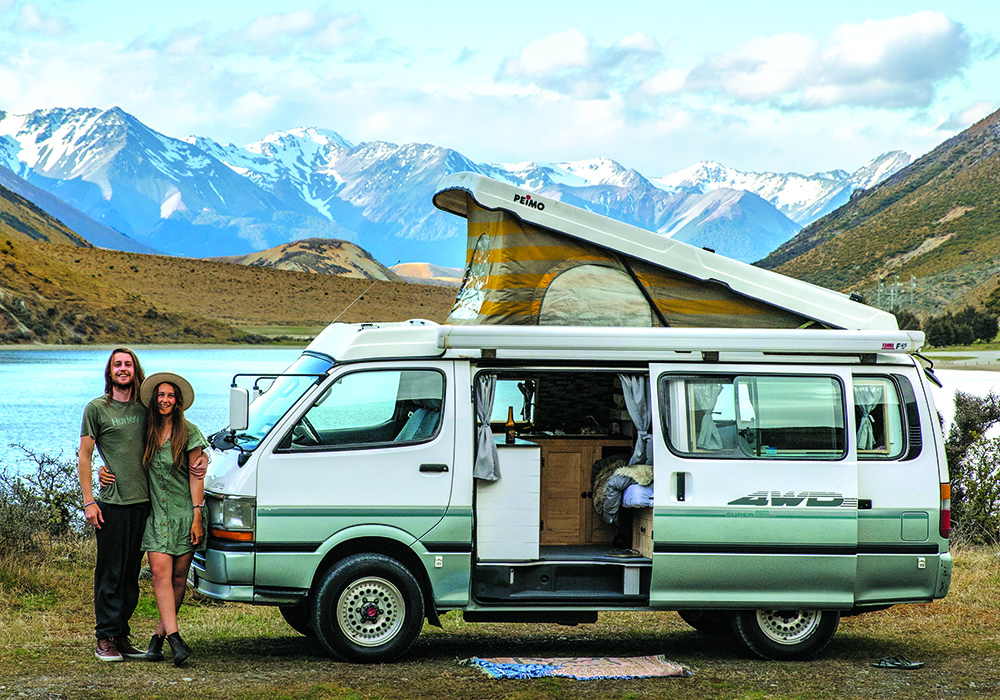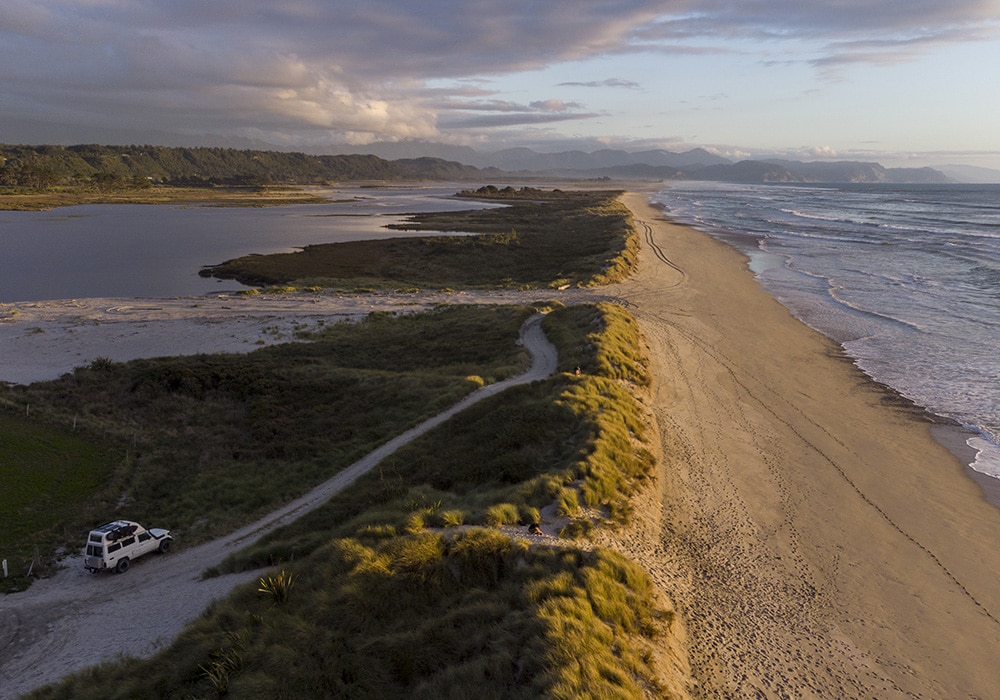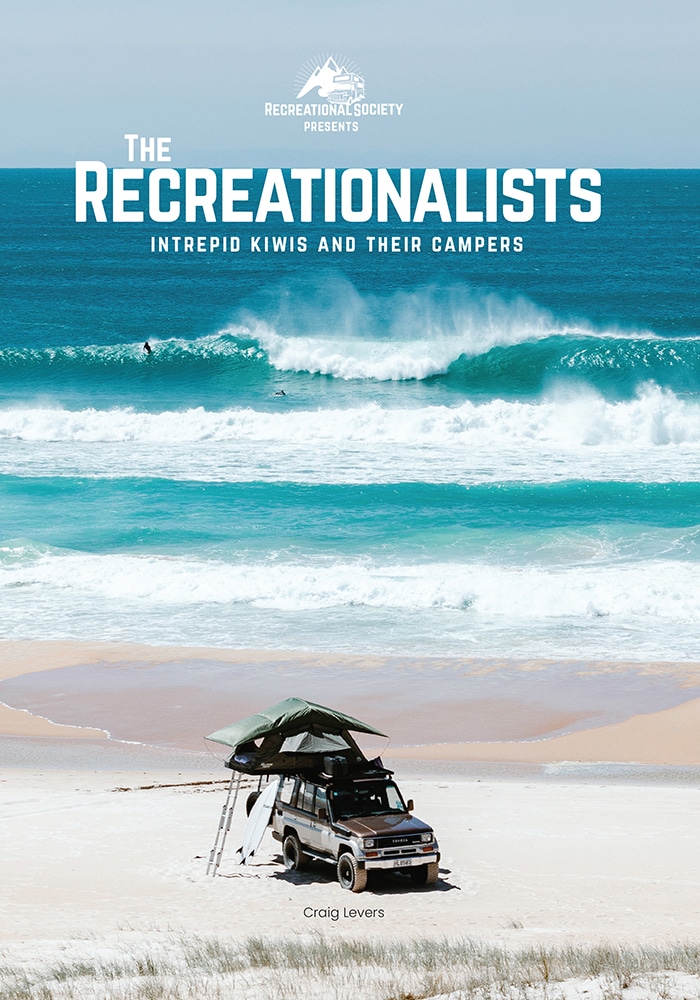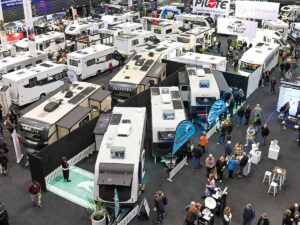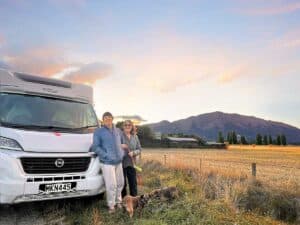VANLIFERS FOR GOOD
From a pop-top Hiace, exploring the United States by road and converting a bus in Australia, to moving back to New Zealand for yet another van conversion, Goose and Ellen Oliver tell us their story of living life permanently on the road.
South Island-based vanlifers Goose (Angus) and Ellen Oliver have multiple camper builds under their belts. They went in at the deep end, refitting a full-size ex-school bus in South Australia as their first project. Halfway through that build, they camperised a van. They returned to NZ, bought a pop-top Hiace camper, stripped it and refitted it beautifully – then rolled it in Milford Sound. They then fitted out another Hiace, then a Townace camper popped up for sale and they couldn’t resist. They bought that and now live in it full-time.
Did they stop there? Of course not. An identical model to the one they had then appeared and it was too good to pass on. Now they owned two campers. “In 2016, we booked a 30-day trip to the United States. The cheapest way to see as much of the country as possible was to rent a campervan.
We rented a Dodge Caravan (small people-mover). This was our first proper trip, as well as our first look into what we now know as vanlife. It made us look closer at how we were living. We realised we were much happier with a lot less stuff, and a lot more freedom. From here on, our mindset switched to thinking about how we could turn this into our daily life. That’s where the bus came in. “We moved to South Australia and started looking at vehicles. The end goal was to have our own piece of self- sustainable land; that’s why we decided on a full-size bus.
It was big enough to fit everything we needed and could be moved around the country in search of our own slice of paradise. We owned the bus for close to three years. It took 15 months to get it up to a liveable standard, with both of us working full-time jobs. The build took a lot longer than expected and in all honesty, put some serious strain on our relationship at points. “We found a place to park the bus to live in while we still worked to save money.
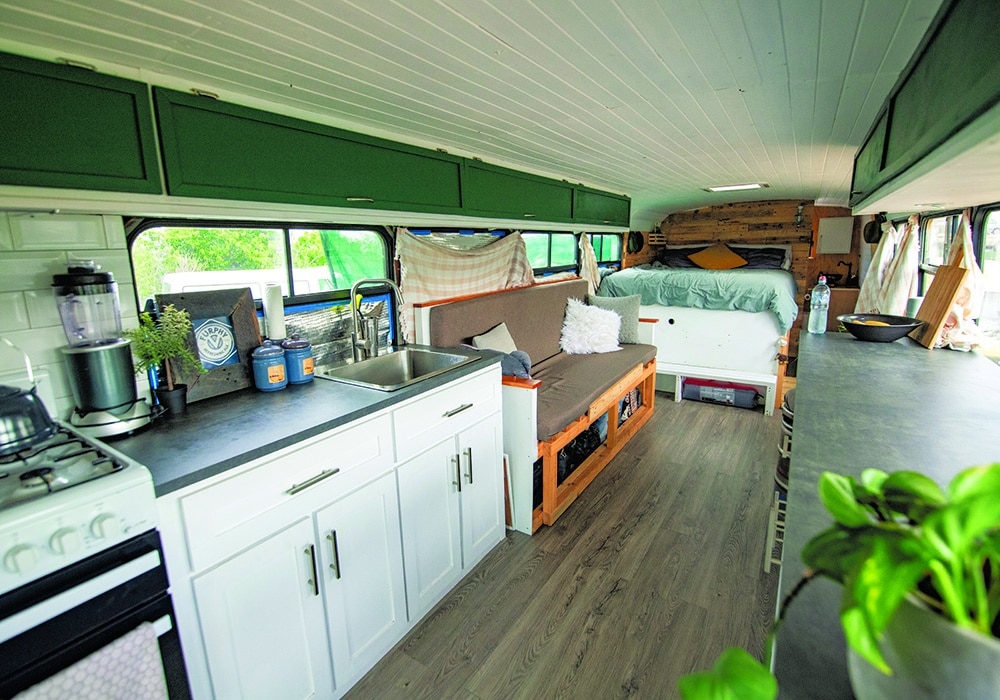
Being in it for a year while stationary was a great way to reduce our outgoing costs and build up the travel fund quicker. It wasn’t until the bus was sold that we got to take her out on the open road. We drove from Adelaide to Darwin, getting a taste of the dream we were working towards. It sounds crazy but the yellow van came around out of necessity more than anything else. Our daily runabout car bit the dust, so we thought why not replace it with a van that we could use for little getaways until the bus was 100% road ready?
It was always going to be temporary. “We did a simple conversion that allowed us to get away on weekends and scratch that travel itch. Through this we realised that bigger isn’t always better. It brought us back to the simple reasons we chose the lifestyle in the first place. Don’t get us wrong, the bus was insanely cool and an awesome first house. We loved living in our own little space that we had created with our own hands. The whole experience was a huge learning curve, and the decision to sell the bus came down to a few factors.
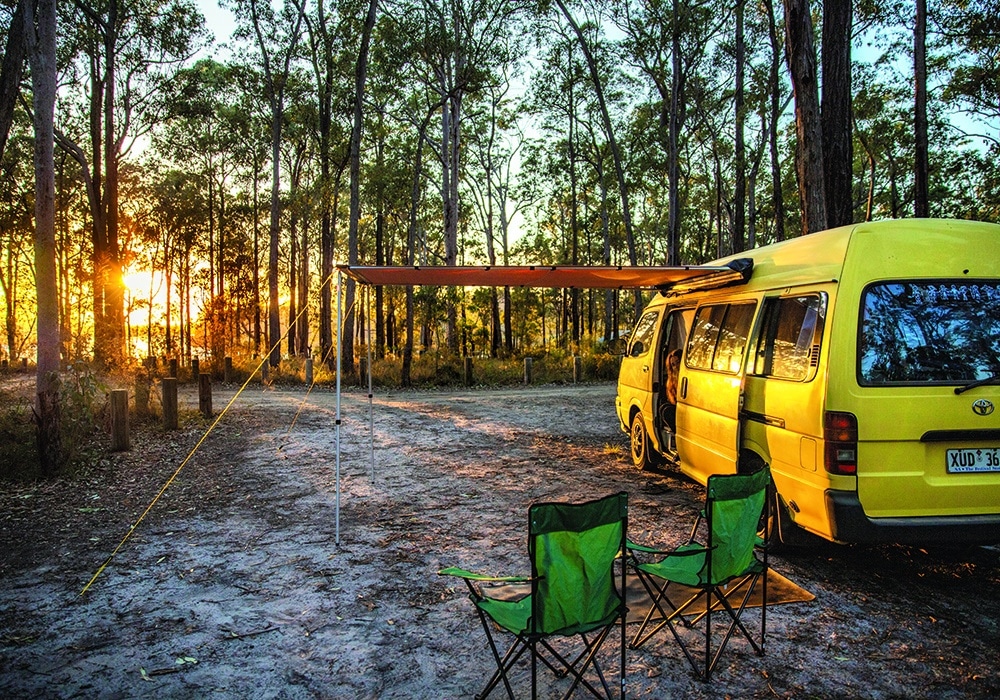
Firstly, it was simply too big and impractical for daily travel. Something that size is more suited to being parked in one place for a longer period of time than we were wanting to. Simple tasks like getting fuel or groceries turned into nightmares. The worry of finding somewhere to park and hoping we didn’t take a wrong turn and get stuck was always in the back of our minds. “Cost also played a big role. With insurance, fuel, maintenance and the licence to drive it, the costs of running a 40ft school bus tend to add up rather quickly.
The more things cost, the quicker we would need to go back to work. That was something we wanted to put off for as long as possible. Going solely off money in, vs how much we sold the bus for, we made a good little profit. If you want to get technical and work out the cost of our labour on top of the materials though, then I’m sure we came out at a loss. It was A LOT of work. “Everyone loves to know the juicy details, and we’re happy sharing the full cost to help others with the big decision. In total, we spent roughly AUD $30,000 (NZ$33,000) on the build.
This includes the bus itself, all materials, batteries and solar etc., as well as the yard costs to store it, as we had no space at home. The bus sold for the listed price of AUD $40,000 (NZ$44,000) with the condition that we drove it to the new owners in Darwin (suited us, she needed a proper farewell!). We used close to $1500 in diesel on the trip, so the profit was closer to $8000. “When we returned to NZ we got Larry the Hiace Pop-Top 4×4 camper. Larry the van was pretty close to our ideal rig. Being diesel, 4WD and us having enough space to stand up were all major buy points for us.
It was set up as a camper from factory, but it didn’t use the space efficiently. It being our full-time home, we needed to redesign the interior to suit our needs better. We spent a week in it first to see what would work for us and how we could best adapt the space. It was important for us to be happy and comfy in a space we spend so much time in. “Prior to the pandemic, we had been on the road fulltime for nearly a year, with no plans of stopping any time soon.
As much as we would love to make money on the road, the reality was that we were solely running off savings to support our travels. With such little outgoings (fuel, food, and beer being the main things), it’s surprising how far you can stretch the bank account if you keep that goal in mind. We worked on our photography skills while adventuring, with the hopes that we could use this to bring in a little income to help us keep on ticking. There are also plenty of opportunities for seasonal work in New Zealand, so if we have to stop for three months of the year to fund nine months of freedom, we are more than happy to do that!”
And then they hit black ice on the Milford Sound Road. Larry was written off . Goose and Ellen were gutted. But they rapidly picked themselves up, not questioning their lifestyle and launched into a quick t-out of another Hiace: Kas the 4×4 van. It didn’t last long; the couple readily admit it was a bit of a knee-jerk reaction. Almost a fear of not being on the road. “We were definitely rushing to find something to move on with after the crash.
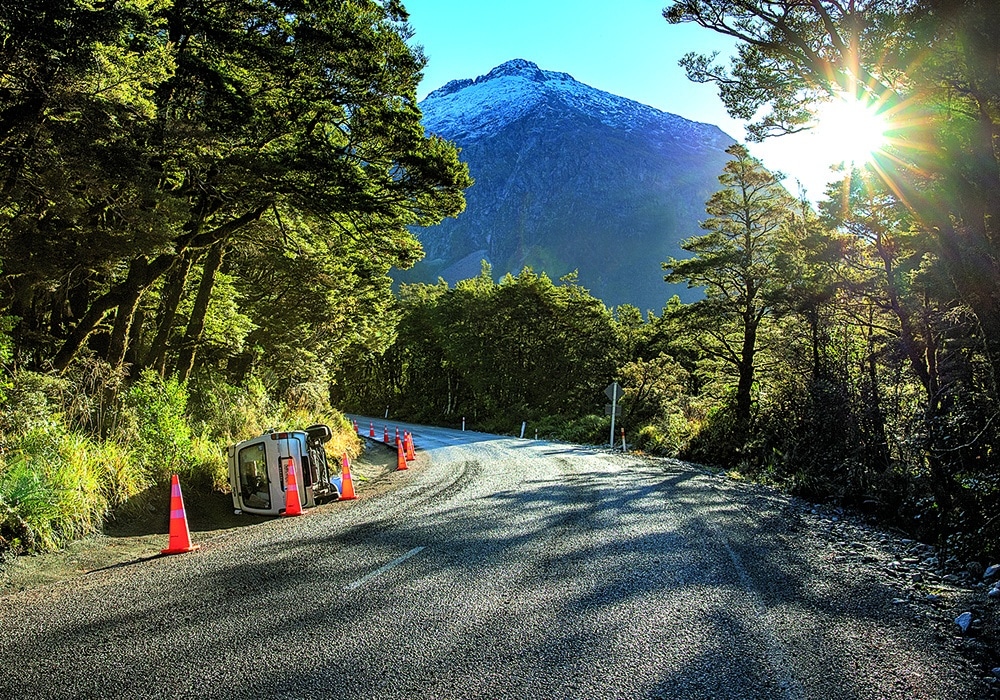
It was always an interim van while we waited for something better to pop up. But we never thought it would happen so soon. As bad as we feel saying it after how much we banged on about Larry being the perfect vehicle, we have to admit that the new Townace is even better! Unless you’ve lived in normal-sized vans before, you can’t imagine how it feels to be in something bigger, even if it is still a micro-motorhome. “As mentioned, we have three main criteria for our ultimate rig: 4×4, diesel powered, and the ability to stand up inside. Those three things don’t come along very often, and you’re even less likely to come across the trifecta at a reasonable price.
Things like being able to get from the cab to the rear easily; the ability to sit up in the pop top and stare at the view; having a built-in table/sink on the exterior; being able to carry firewood in the storage box are extra layers of icing on an already damn good cake! “Our fifth campervan in four years, Seb the Townace, is a Japanese micro-motorhome (these Toyotas have a cult following worldwide).
While Seb the Townace did come as a pretty functional camper, they’re designed to be more weekenders than full-time live-in vehicles. We’re on the road nearly 24/7, so we needed to modify the van to make daily living a little easier. First up was storage – mainly for Ellen’s clothes! We modified the existing storage above the front seats to hold our bedding, freeing up room under a seat to fit the majority of our clothes.
We also installed a kitchen cabinet so our food was easier to access, as well as some little storage cabinets behind the front seats. Seb came with a basic electrical setup but it wouldn’t handle the loads we needed to put on it. We installed a full Redarc system including 300w of solar, a DC – DC Charger, and a 700w inverter. No more power worries! The van was now ready for full time living, but with the factory fibreglass t-out not looking the best, this van would be stripped and rebuilt soon enough. There are a few things we’ve picked up along the way that might help those looking at starting their own adventure. Firstly, the most important decision has to be the vehicle itself.
Reliability and ease/cost of maintenance and repairs play a big factor when choosing a rig. You want to know that the vehicle will hold out when you need it most, and remote breakdowns can mean big bucks. I’ve always leaned more towards diesel engines for these reasons, with the added bonus of them generally being cheaper to fuel up as well. Then vehicle size comes into play; we could go on and on about the pros and cons of each body type. It comes down to convenience vs drivability vs comfort vs storage vs cost, and which of these things you personally prioritise over the others.
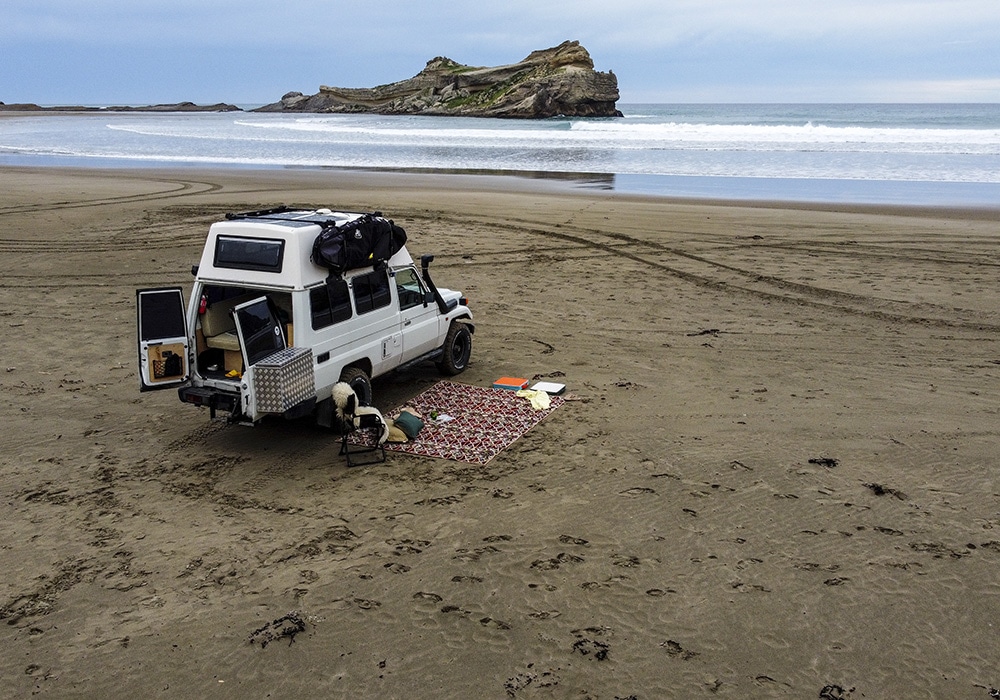
The next consideration is climate. Do you want a mobile surf shack to spend days by the seaside? Effective ventilation to keep cool might be necessary here. Do you plan on chasing the snow or living anywhere in the South Island? Some effort put into insulating or even a heater set-up could make your time much more enjoyable.
It pays to think these things through before jumping in and building anything. “Next up, make sure you are self- contained. This is extremely important in NZ, as it gives you much more freedom with camp spots. (We think it’s equally important for countries that don’t have regulations like NZ.)
Self-containment basically means you have enough resources onboard to last all occupants a certain amount of time off -grid: enough fresh and grey water storage, a toilet of some kind and a small rubbish bin. This helps ensure the areas we are exploring stay free from human contamination. Take only photos, leave only footprints etc.
“Along with having enough storage space for food and water, the other vital factor is the solar and battery setup. Investing a bit of money here means more time in the bush relaxing and less time worrying about battery levels and the need to plug in and charge up. Lastly – and this is truly the most important thing – just get out there and DO IT!
Whether it’s for a weekend, a month, or a full-on lifestyle, vanlife is the greatest way to explore. All you need to do is turn the key and roll out!”
-Extracted from The Recreationalists: Intrepid Kiwis And Their Campers by Craig Levers.
WIN A COPY AND READ IT YOURSELF!
We have one copy of this very cool ‘Kiwi as’ book to give away! email us at competitions@nzmcd.co.nz to be in to win.

